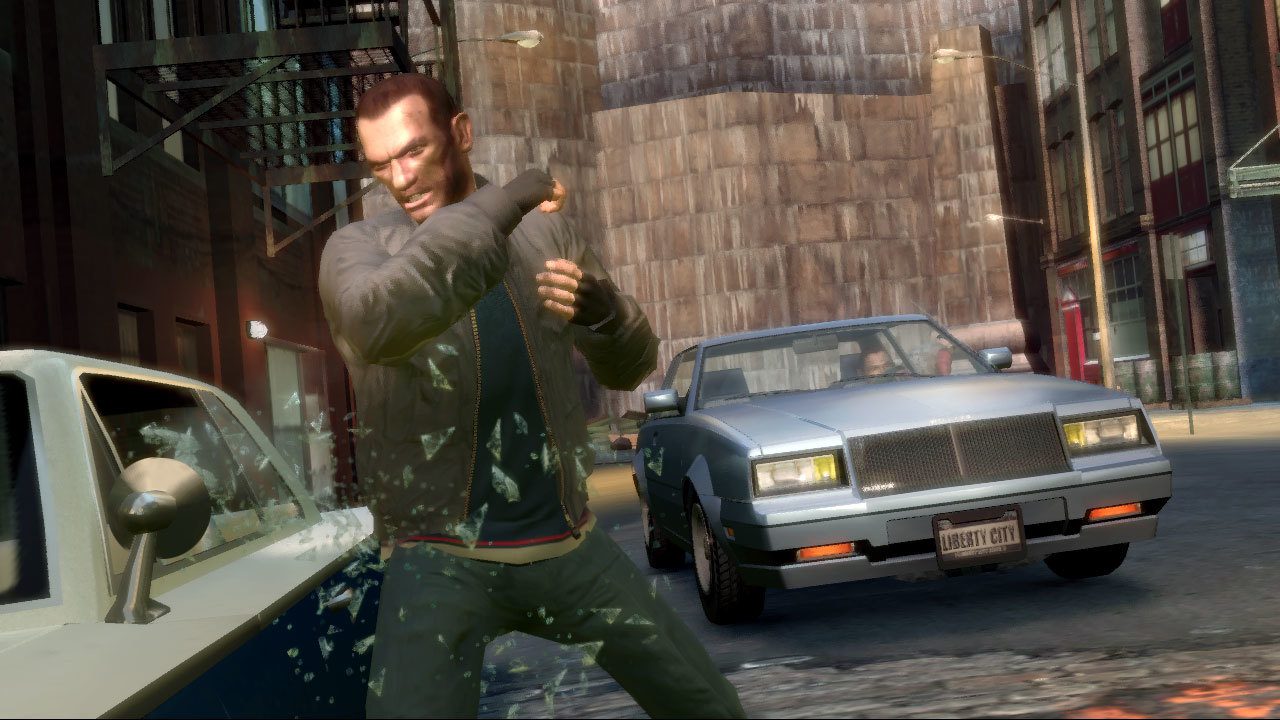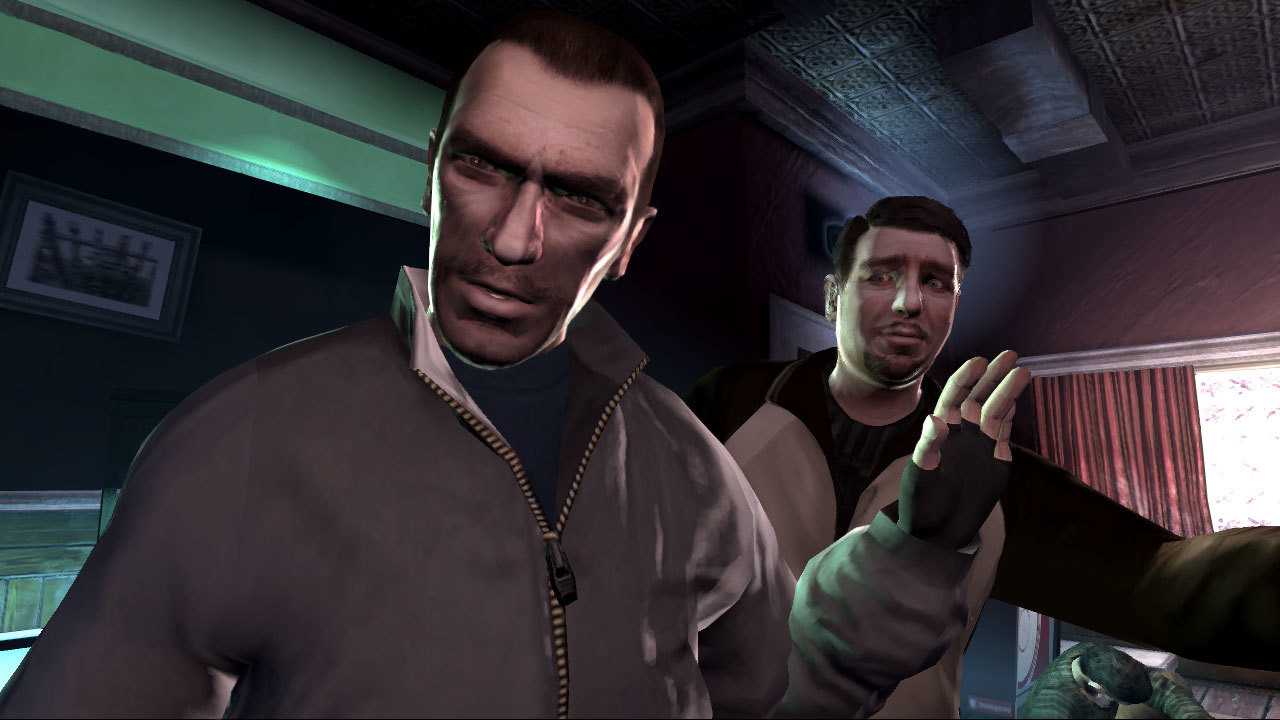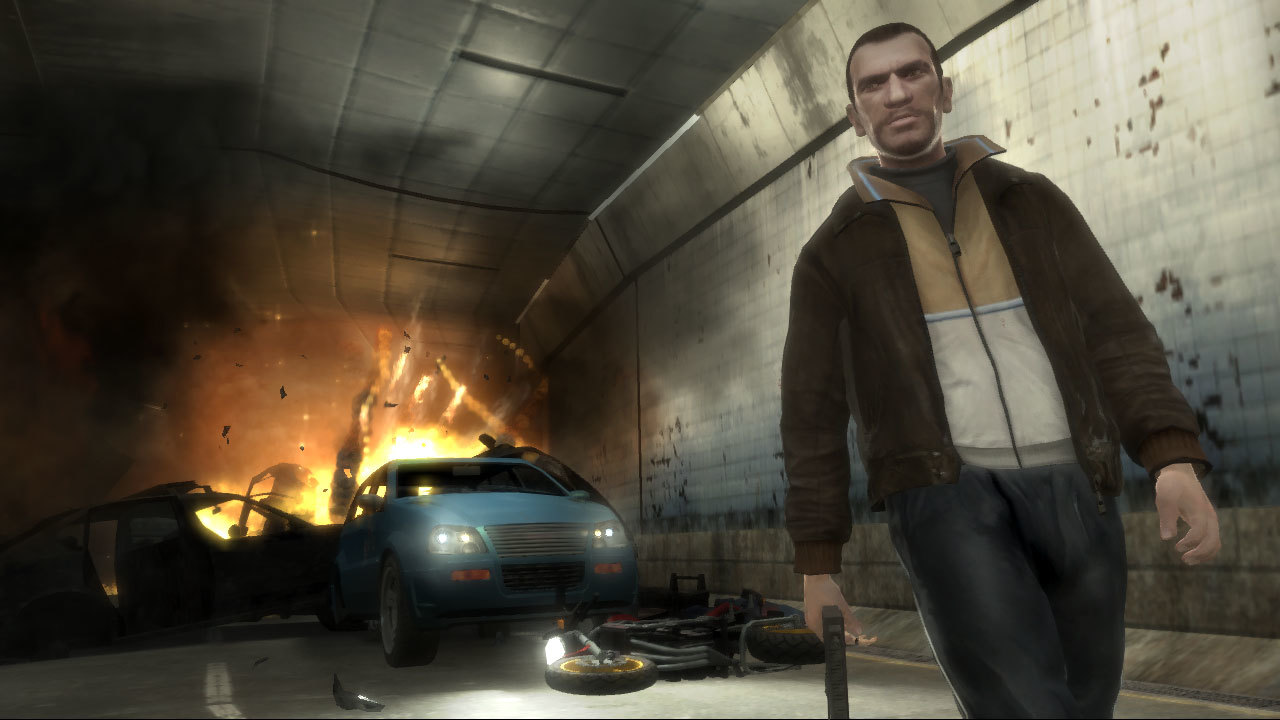In 2008, Grand Theft Auto IV came at a time when open-world games were a dime a dozen. With the open-world framework set by GTA III, where player agency inside a large and expansive setting is given all the focus, Rockstar Games‘ big return to the criminal underworld of Liberty City had to overcome some high expectations and other competitors that advanced the genre even further. Though GTA IV found remarkable critical and commercial success, many fans found the game’s more grounded and subdued tone to be somewhat jarring, especially compared to GTA San Andreas‘ outlandish, over-the-top campaign.
When you look at GTA IV in the broader sense, it was more interested in immersing players into the atmosphere of Liberty City. With a larger cast of characters, along with several new systems to learn while exploring a more dense city, the new setting offered the most dynamic space in a GTA game at the time. And now celebrating its tenth anniversary in 2018, we’re taking a look back at Rockstar’s seminal sequel and how its more realistic take and focus on immersing players into its dense city opened doors for many other open-world games thereafter–setting the stage for Rockstar’s biggest success, GTA V.

As the first GTA game on PS3 and Xbox 360, the developers at Rockstar North opted to switch things up for its return to Liberty City. Powered by the Rockstar Advanced Game Engine (RAGE for short), which made its debut with the budget-release Rockstar Games Presents: Table Tennis, Grand Theft Auto IV was the first AAA game to use the publisher’s new tech. In addition to featuring the Euphoria physics-engine, it offered far more detail in movement and animations, along with stronger visual fidelity and design. This gave the game a drastically different look and feel compared to the previous entries, presenting more detail in geography and aesthetic across the city’s various locales across the four boroughs of Liberty City.
While the familiar iconography, social commentary, and open-world action from previous games were still present–albeit in a more subdued light–GTA IV’s plot centers around the immigrant experience of Niko Bellic, establishing a fresh start for the series. Traveling from eastern Europe, the Serbian War veteran sought a new life in Liberty City, while also trying to find the man responsible for betraying him many years before. Though GTA III was set in Liberty City, this game’s incarnation of the setting was entirely revamped. This put players and Niko Bellic on equal footing, both outsiders to a new setting they had to make their mark in.
GTA IV has its share of high-stakes shootouts and elaborate high-speed chases, including the now-infamous Three Leaf Clover bank heist mission–which went on to serve as the basis for GTA V’s heist missions–but it never goes completely beyond the realm of belief. To do so would go counter to the tone of the main story and the style it went for. Respectively, GTA IV forgoes a lot of dumb action in favor of actually getting you to spend time with the many supporting characters in Niko’s story.
„Choosing to spend some time with secondary characters leads to some surprising moments of humanity and friendship, which is somewhat unexpected for a GTA game.“
Early on, Niko’s ne’er-do-well cousin Roman gives him a cellphone, which acts as the game’s main communication and contextual gameplay tool. Along with calling in taxies and emergency service vehicles–allowing you to take on side-jobs as a driver or even track down local criminals by hijacking service vehicles–it also opens up relationships with Niko’s closest allies. During your off time, you can take part in seemingly frivolous activities, such as going to cabarets, drinking at local bars, or visiting a strip club. Most importantly, you could even take part in a few games of bowling, which turns out to be a favorite among Niko’s circle of friends–particularly Roman.
In some cases, characters will contact Niko directly to hang out for happy hour, or for genuine dates with potential love interests. These encounters, while mostly optional, do have some greater payoff, such as extra bodyguards and access to better resources. For instance, Dwayne Forge, a former crime lord and ex-con, will contact players to hang out. Despite having tremendous pull in the criminal underworld, he lives a largely lonesome life in a perpetual state of depression. Hanging out with Dwayne will encourage him to loosen up and open up about his past. Choosing to spend some time with secondary characters leads to some surprising moments of humanity and friendship, which is somewhat unexpected for a GTA game. It turned out that the game wasn’t all about mayhem and crime after all. It was refreshing to see your time being rewarded with something cool in a GTA game, without having to fire a single bullet.

As Niko becomes more accustomed to living in Liberty City, his disdain for American life grows–sharing his thoughts with others about awful US television and the growing influence of social media. The radio stations of Liberty City blare late-2000s music and political commentary, and news stories keep you aware of the local goings-on around town, even referencing your own antics. That’s not to say that its commentary is totally on the money, however. Much of the humor and style it tries to play off for laughs hasn’t aged all that well–such as scenes with gay stereotypes and off-color racial humor. Granted, GTA has never been totally on the mark with its social critiques, but it does however have a strong sense of time.
Prior to GTA IV, the natural thing for other games to do was to offer more content, more action, and a bigger space to take part in. While other open-world games certainly did that well, such as the GTA clone-turned-full-blown-parody Saints Row, GTA IV focused on offering more active content to dive into. In comparison to San Andreas, the size of Liberty City’s four boroughs are smaller, but it’s far more dense with activity. Compared to previous games, GTA IV did a far better job of rewarding you for messing around and taking on side activities. Whether it was hanging out with friends or exploring the city to find several unmarked quests that led to some of the game’s most humorous and darkest missions, there was an incredible amount of thought placed into the core design of the world and how you could choose to spend your time in it.
GTA IV came at a time when open-world games were increasingly common, and it approached things in a way that made it stand out from the rest. Sometime after GTA IV’s launch, Rockstar released two DLC episodes–The Lost and Damned, and The Ballad of Gay Tony–which introduced new missions and playable events that eventually lightened the tone. Along with offering more extravagant action set-pieces and a larger arsenal of weapons in the style of the previous games, these expansions also offered alternate perspectives to the main story–another aspect further expanded upon in GTA V.


When looking at Grand Theft Auto IV in the broader picture of the series, the general vibe it tends to give off can make it feel a bit self-serious. Still, there’s something endearing–and even commendable–about how Rockstar stuck with it, and showing that you can still have a fun time exploring the city while learning more about the people in it. 10 years later, Grand Theft Auto IV’s Liberty City still features some of the series‘ finest moments of storytelling. And given that it’s coming from a series that focused on tons of dumb moments full of violent nonsense, that’s a remarkable achievement in its own right.
Website: LINK
Schreibe einen Kommentar
Du musst angemeldet sein, um einen Kommentar abzugeben.